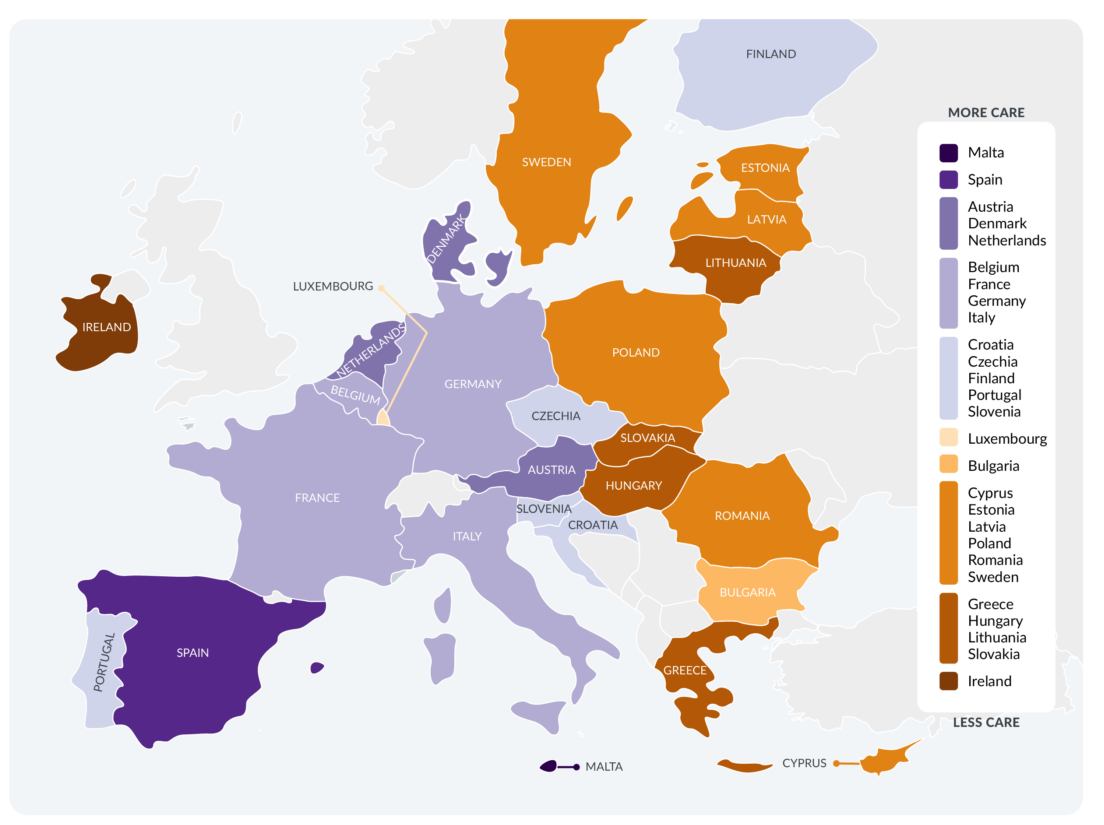Trans Health Map 2022: The State of Trans Healthcare in the EU

This first edition of TGEU’s Trans Health Map represents the availability and accessibility of trans-specific healthcare in the 27 member states of the European Union.
Why the Trans Health Map?
Trans people have historically faced challenges in receiving trans specific healthcare that is accessible, affordable, and of high quality. Many members of our community struggle to find appointments on time or find a healthcare professional who is respectful and listens to our needs. According to the survey by the EU Fundamental Rights Agency, 34% of trans people from across all member states of the European Union reported having faced discrimination by healthcare workers based on their gender identity.
Access to trans specific healthcare also varies widely in the EU. For instance, Malta has implemented a model of healthcare that is grounded in self-determination and based on informed consent. In contrast, many countries still require a psychiatric diagnosis to access trans specific healthcare. In Ireland, the system is bogged down by waiting times of over 7 years to see a healthcare professional. Most recently, the COVID-19 pandemic and the war in Ukraine have had alarming impacts on access to essential medication and hormones for trans people.
At the same time, the need for trans specific healthcare and the very existence of trans identities are also facing growing attacks from anti-gender and anti-rights groups. This constitutes a real threat to the delivery of accessible, affordable, and quality depathologised trans specific healthcare and risks undoing the decades of progress that the community has fought hard to achieve.
The Trans Health Map highlights that while there have been important strides forward, there is much more to be done in the EU member states. Trans identities are no longer pathologised and being trans is not a psychiatric condition. Trans specific healthcare in the EU member states need to urgently reflect this and must transition to processes based entirely on informed consent, and ensure that it is equitable and accessible by individuals who are further marginalised by racism, poverty, sexism, ableism, xenophobia, ageism, and other forms of oppression.
What can I find in it?
The Trans Health Map shows the overall status of trans specific healthcare in each member state based on information collected on 6 factors:
- Type of transgender healthcare and coverage available in the country
- Requirement for a psychiatric diagnosis before hormonal treatment or surgery
- Waiting time for first appointment with a trans healthcare professional
- Groups excluded or made to wait longer to access trans specific healthcare
- Youngest age for puberty blockers, and
- Youngest age for hormones.
What is our methodology?
The map was created using a survey of country experts and an in-depth analysis of publicly available documentation. For each country, we received responses from 1 to 3 experts. These experts were primarily activists but a small number were instead or additionally medical professionals. Information from country experts were verified through a review of publicly available country records including legal, governmental, and organisational reports and websites.
Each country was scored on a scale of 0-2 points on each of the 6 factors mentioned above, totalling to 12 points. Countries were then ranked on the basis of their total score.
A tabulated overview of the sources of verification, scores allocated for each of the factors, the reasoning for the scoring or “decision logic”, the code book, and the overall score allocated to each country is available for reference.
The scores and ranking in this map are based on sources of information that are publicly available in different languages in the region. We recognise that we may have overlooked or missed certain documents and we invite the community to bring additional details or errors to our attention. We are committed to reviewing the scores and our goal is to update and revise this map biennially to reflect the developments in this fast changing field.
We express our gratitude to all the country experts who completed our survey with patience, dedication, and care. This map would not have been possible without the committed and tireless work by Noah Adams, who led the research and analysis for this project.